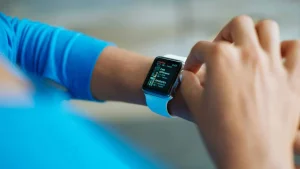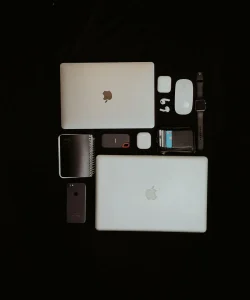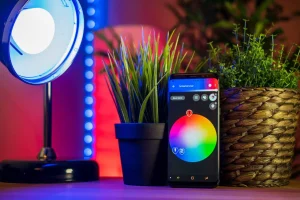A Guide to Mastering Beautiful Data Visualization Techniques
Let’s be brutally honest for a moment. Most data charts are a snooze-fest. They’re a chaotic jumble of lines and bars, spewed out by software with zero artistic soul, and they do more to confuse than to clarify. We’ve all been in that meeting, squinting at a slide, pretending to understand what the mess of colors is supposed to mean. But it doesn’t have to be this way. Data can be beautiful. And when it is, it’s not just pretty—it’s powerful. Moving beyond default settings requires a dedication to learning truly beautiful data visualization techniques, a skill that separates the amateurs from the masters.
The Art and Science of Beautiful Data Visualization
Data visualization is a tightrope walk between two disciplines: the rigid, analytical world of data science and the fluid, subjective world of art and design. Get the science wrong, and your chart is a beautiful lie. Get the art wrong, and it’s a truthful, but utterly boring, mess that no one will look at. The magic happens right in the middle. This is where the core principles of stunning data visualization aesthetics come into play, transforming raw numbers into a compelling visual narrative. The goal isn’t just to present data; it’s to present it with clarity, elegance, and purpose. It’s about making the data speak for itself, and beautiful data visualization techniques are the language it uses. I believe the best visualizations feel intuitive, almost like the data itself chose to be presented that way. It’s a seamless fusion of accuracy and aesthetic appeal, and achieving that balance is the essence of these beautiful data visualization techniques.
Why Aesthetics Matter: The Impact of Visually Appealing Data
Why even bother with making data look good? Because aesthetics build trust and command attention. A well-designed visual is more persuasive, more memorable, and frankly, more respected. I once sat in a budget meeting where a department head presented a hideously cluttered spreadsheet projected on the wall. The numbers might have been correct, but nobody could follow them. The request was denied. Ten minutes later, another manager presented her case using a clean, elegant bar chart that clearly showed a trend. It was simple. It was compelling. It was beautiful. Her budget was approved on the spot. Same data, different story. That’s the real-world impact of beautiful data visualization on decision making. We are visual creatures, hard-wired to process visual information thousands of times faster than text. When you leverage beautiful data visualization techniques, you’re not just decorating a chart; you’re hacking the human brain to make your point land with maximum impact. You can find countless examples of aesthetically pleasing data visualization designs online that have influenced public opinion or corporate strategy, all because they were designed with the viewer in mind. These are the beautiful data visualization techniques that change minds and drive action.
Fundamental Principles for Stunning Data Visualizations
So, you’re convinced. You want to create visuals that pop. But where do you start? It begins with a handful of fundamental principles. Mastering these basics is non-negotiable if you want to be proficient with beautiful data visualization techniques. It’s not about complex software; it’s about thoughtful design choices.
Choosing the Right Chart Type for Your Data Story
Before you even think about colors or fonts, you must pick the right vehicle for your data. Using a pie chart to show change over time is a cardinal sin. Seriously, just don’t. Each chart type has a specific job. Line charts show trends. Bar charts compare quantities. Scatter plots reveal relationships. The choice you make is the foundation of your entire visual story. It’s one of the most crucial, yet often overlooked, beautiful data visualization techniques. Getting this right is half the battle won. So many people just default to whatever their software suggests, which is a terrible idea. Think about the narrative you want to build. This is where you start crafting your visual storytelling with beautiful data charts. These tips for designing visually appealing data charts and graphs begin with a simple question: what am I trying to say? The answer determines your chart.
Mastering Color Palettes for Emotional Impact
Color is not for decoration. Let me repeat that. Color is not for decoration. It’s a powerful tool for communication, capable of conveying meaning, highlighting key information, and evoking emotion. A chaotic rainbow palette just creates visual noise. Instead, use a limited, intentional palette. Think about brand colors, the emotional tone of the data (e.g., reds for loss, greens for growth), and, critically, accessibility for colorblind viewers. This is a complex but rewarding skill to develop. Learning how to choose colors for beautiful data visualizations can dramatically improve the clarity and professionalism of your work. The right palette can make a chart feel calm, urgent, or optimistic. It’s a subtle yet potent aspect of beautiful data visualization techniques that helps with understanding user perception of beautiful data visuals and guiding their eyes to what matters most.
The Power of Typography and Layout
Words matter, and so does how they look. Typography in data visualization should be clean, legible, and unobtrusive. Your font choice shouldn’t be the star of the show; the data should be. Choose a simple sans-serif font and use variations in size and weight to create a clear hierarchy. And please, give your elements room to breathe! White space is your best friend. A cluttered chart is a stressful chart. A well-spaced layout guides the viewer’s eye logically from one element to the next. This careful arrangement of text and space is foundational to designing beautiful infographics with data visualization and a key component of effective beautiful data visualization techniques. If you’re ever stuck, look around. You can find where to find beautiful data visualization inspiration all over the web, and you’ll notice they all respect the power of clean layout.
Simplifying Complexity: Decluttering Your Visuals
The goal of great data visualization is simplification. Your job is to find the signal and remove the noise. Get rid of anything that doesn’t add informational value. Do you really need those heavy gridlines? That 3D effect? That redundant legend? Probably not. Edward Tufte, a pioneer in this field, talks about maximizing the “data-ink ratio”—the amount of ink used to present actual data versus the total ink used in the graphic. This principle is one of the most important beautiful data visualization techniques. The process of making complex data beautiful and easy to understand is almost always a process of subtraction, not addition. The best designers know what to leave out. These are the essential steps to achieve beautiful data visualization results: identify the core message, then ruthlessly remove everything that doesn’t support it.
Exploring Advanced Data Visualization Techniques
Once you’ve nailed the fundamentals, you can start exploring more dynamic and engaging ways to present your data. This is where you can truly set your work apart, employing advanced beautiful data visualization techniques to create immersive experiences for your audience.
Interactive Dashboards: Engaging Your Audience
Why show a static picture when you can provide an interactive experience? Dashboards that allow users to filter, drill down, and explore the data for themselves are incredibly powerful. They transform passive viewers into active participants. This is where a guide to creating beautiful interactive data visualizations becomes invaluable. The user feels a sense of ownership and discovery, leading to deeper insights. Building these requires a different mindset, focused on user experience and intuitive navigation. And when done well, the best practices for beautiful and effective data dashboards can turn a simple report into a powerful analytical tool. Many beautiful data visualization tools for business intelligence are built specifically for this purpose, making it easier than ever to create these engaging interfaces. Applying beautiful data visualization techniques to dashboards is about creating clarity in a sea of information.
Storytelling with Data: Crafting Compelling Narratives
The most effective visualizations tell a story. They have a beginning (the context), a middle (the key insights), and an end (the conclusion or call to action). Instead of just presenting a chart, you guide your audience through the data, building a narrative that leads them to an inevitable conclusion. This approach contextualizes the numbers, making them relatable and memorable. You might ask, what are the most beautiful data visualization techniques? I’d argue it’s the ones that make you feel something. This is more than just plotting points on a graph; it’s about weaving those points into a convincing argument. This applies heavily to beautiful data visualization for public consumption, where a strong narrative can make complex topics accessible to a wider audience.
Utilizing Modern Visualization Tools and Libraries
The toolkit available today is astounding. For those who want a user-friendly interface, learning how to create beautiful data visualizations in tableau or Power BI can be transformative. These tools are designed to help you implement beautiful data visualization techniques without writing a single line of code. For the more technically inclined, learning beautiful data visualization with python libraries like Matplotlib, Seaborn, or Plotly opens up a universe of customization. There is also highly specialized software for generating beautiful scientific data visualizations that can handle massive, complex datasets. And for those looking to push the boundaries, exploring methods for creating beautiful animated data visualizations can bring your data story to life in a way static charts simply can’t.
Best Practices and Common Mistakes to Avoid
Let’s get straight to it. Do use color intentionally. Don’t use a 3D pie chart ever, for any reason. Do keep your visuals clean and uncluttered. Don’t use confusing typography that is hard to read. Do label your axes clearly. A core tenet of beautiful data visualization techniques is clarity above all. Don’t make your audience guess what they’re looking at. Do use the right chart for the job. Don’t distort the scale of an axis to exaggerate a trend—it’s dishonest and undermines trust. Following these simple rules forms the essential steps to achieve beautiful data visualization results. Avoiding common pitfalls is just as important as adopting best practices when applying beautiful data visualization techniques.
Elevating Your Data Storytelling Through Beautiful Visualizations
Ultimately, what are the most beautiful data visualization techniques? They are the ones that bridge the gap between numbers and human understanding. They are the ones that spark curiosity, reveal hidden truths, and empower better decision-making. The journey from a cluttered spreadsheet to an elegant, insightful visual is a skill. It’s a craft. It requires practice, a good eye for design, and a deep respect for the data. But it’s a skill worth mastering. Because in a world drowning in information, clarity is a superpower. By embracing these beautiful data visualization techniques, you’re not just creating charts. You’re making sense of the world, one beautiful, compelling data story at a time. The impact of beautiful data visualization on decision making is undeniable, and by committing to these principles, you can ensure your data is not just seen, but truly understood.







